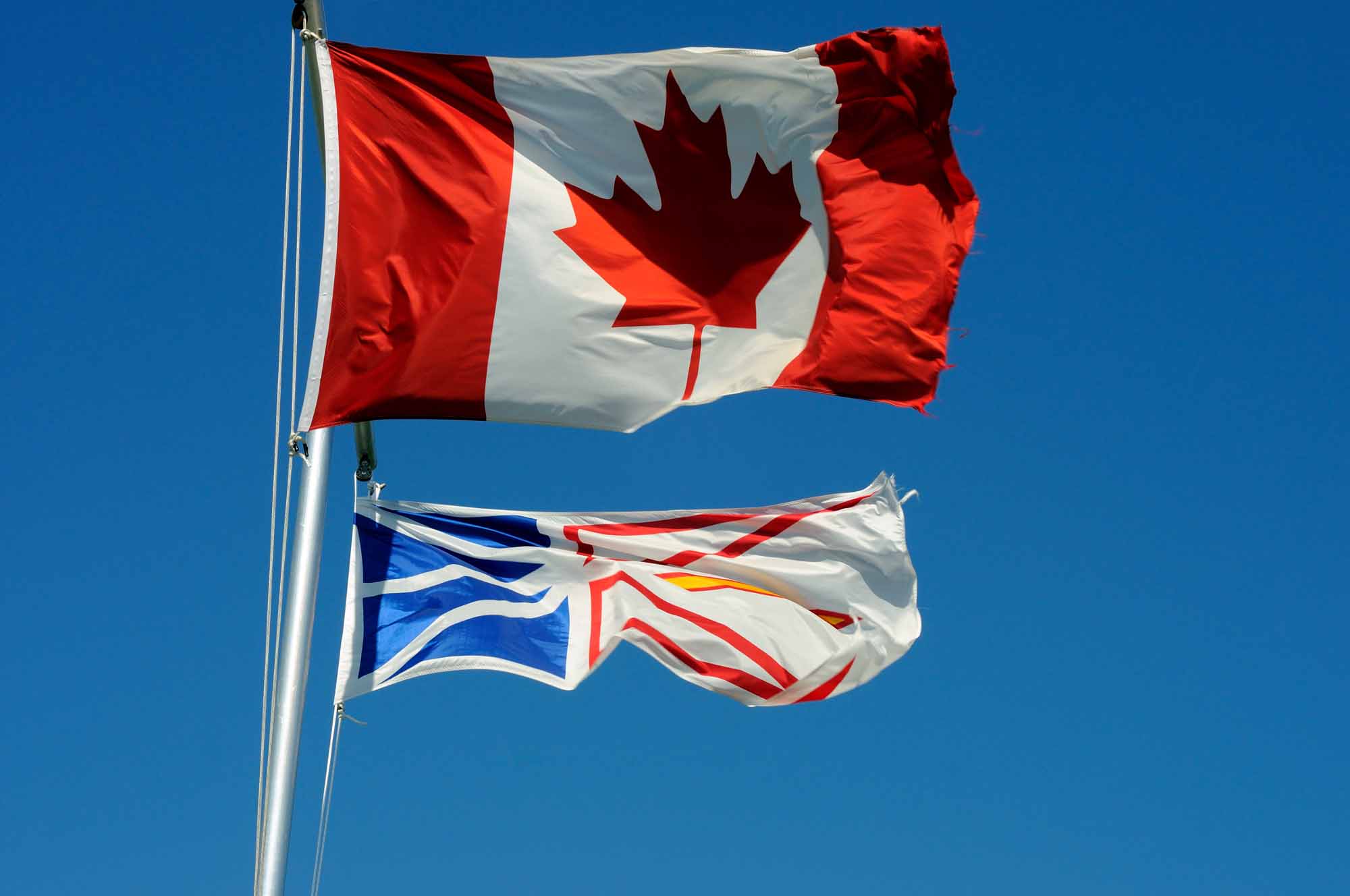Browse "Things"
-
Article
Redpath Sugar
Redpath Sugar Ltd. is a Canadian sugar refining company (see Sugar Industry). It is one of the oldest continuously operated companies in Canada. It is also the oldest sugar cane refining operation in Canada, having been established in Montreal in 1854. The company bears the name of its founder, John Redpath, whose company expanded considerably under the direction and leadership of his son, Peter Redpath, and his son-in-law, Sir George Alexander Drummond. In 2007, Redpath Sugar Ltd. became a subsidiary of American Sugar Refining (ASR Group). Redpath Sugar Ltd.’s primary production and refining operation is located on the Toronto waterfront.
"https://d2ttikhf7xbzbs.cloudfront.net/RedpathSugar/RedpathSugarRefinery2.jpg" // resources/views/front/categories/view.blade.php
https://d2ttikhf7xbzbs.cloudfront.net/RedpathSugar/RedpathSugarRefinery2.jpg
-
Editorial
Redrawing the West: The Politics of Provincehood in 1905
The following article is an editorial written by The Canadian Encyclopedia staff. Editorials are not usually updated.
"https://d2ttikhf7xbzbs.cloudfront.net/media/media/0aab1420-d19c-4cf3-9103-2deacba6cbbf.jpg" // resources/views/front/categories/view.blade.php
https://d2ttikhf7xbzbs.cloudfront.net/media/media/0aab1420-d19c-4cf3-9103-2deacba6cbbf.jpg
-
Article
Referendum
A referendum is the asking of a political question to an electorate, for direct decision by general vote. Although federal referendums are rare in Canada, there have been numerous provincial referendums and plebiscites since Confederation.
"https://d2ttikhf7xbzbs.cloudfront.net/media/media/6b24baf0-47e4-407f-a5cd-f72da2d9221d.jpg" // resources/views/front/categories/view.blade.php
https://d2ttikhf7xbzbs.cloudfront.net/media/media/6b24baf0-47e4-407f-a5cd-f72da2d9221d.jpg
-
Macleans
Referendum Legislation
They are a strange pair in many ways, these two Quebecers of different generations who share the conviction that their province belongs in Canada. Politics has never been a science for Jean Chrétien. He has forged his remarkable political career by following the call of his heart and his gut.This article was originally published in Maclean's Magazine on December 20, 1999
"https://development.thecanadianencyclopedia.ca/images/tce_placeholder.jpg?v=e9dca980c9bdb3aa11e832e7ea94f5d9" // resources/views/front/categories/view.blade.php
https://development.thecanadianencyclopedia.ca/images/tce_placeholder.jpg?v=e9dca980c9bdb3aa11e832e7ea94f5d9
-
Macleans
Referendum Question Unveiled
Finally, the question. It is not long: only 41 words in French, 43 in English. Nor is it as clear as Jacques Parizeau always promised it would be. It is, in fact, cloaked in ambiguity, carefully crafted to obscure the full magnitude of the decision that awaits Quebec's 4.9 million voters.This article was originally published in Maclean's Magazine on September 18, 1995
"https://development.thecanadianencyclopedia.ca/images/tce_placeholder.jpg?v=e9dca980c9bdb3aa11e832e7ea94f5d9" // resources/views/front/categories/view.blade.php
https://development.thecanadianencyclopedia.ca/images/tce_placeholder.jpg?v=e9dca980c9bdb3aa11e832e7ea94f5d9
-
Article
Reforestation
Many people believe a new sapling must be planted to replace every tree that is harvested. In fact, the FOREST regenerates naturally. After logging, young shoots grow and develop quickly because they have more room and good exposure to sunlight.
"https://development.thecanadianencyclopedia.ca/images/tce_placeholder.jpg?v=e9dca980c9bdb3aa11e832e7ea94f5d9" // resources/views/front/categories/view.blade.php
https://development.thecanadianencyclopedia.ca/images/tce_placeholder.jpg?v=e9dca980c9bdb3aa11e832e7ea94f5d9
-
Macleans
Reform Holds Annual Convention
How many politicians does it take to grease a combine? Three or four. It depends how fast you feed 'em in.This article was originally published in Maclean's Magazine on June 17, 1996
"https://development.thecanadianencyclopedia.ca/images/tce_placeholder.jpg?v=e9dca980c9bdb3aa11e832e7ea94f5d9" // resources/views/front/categories/view.blade.php
https://development.thecanadianencyclopedia.ca/images/tce_placeholder.jpg?v=e9dca980c9bdb3aa11e832e7ea94f5d9
-
Article
Reform Movement in Upper Canada
After the War of 1812, Upper Canada began to develop rapidly. This resulted in social and economic tensions and political issues. These included the expulsion of Robert Gourlay, the Alien Question, the Anglican monopoly of the Clergy Reserves and education, and Tory control of patronage.
"https://d2ttikhf7xbzbs.cloudfront.net/media/media/9e9e3848-d959-4713-9a6f-8747181ebc24.jpg" // resources/views/front/categories/view.blade.php
https://d2ttikhf7xbzbs.cloudfront.net/media/media/9e9e3848-d959-4713-9a6f-8747181ebc24.jpg
-
Article
Reform Party of Canada
The Reform Party was a right-wing, populist, western political protest movement that grew to become the official opposition in Parliament in 1997. Reform played a role in the creation of the Canadian Alliance, as well as the demise of the federal Progressive Conservative Party — and the eventual merger of those two groups into today's Conservative Party.
"https://d2ttikhf7xbzbs.cloudfront.net/media/media/20f6095e-a519-4681-b8bf-3fb0f76d4136.png" // resources/views/front/categories/view.blade.php
https://d2ttikhf7xbzbs.cloudfront.net/media/media/20f6095e-a519-4681-b8bf-3fb0f76d4136.png
-
Macleans
Reform Unveils Election Platform
During his teenage years, Preston Manning spent many early daylight hours milking cows and performing other chores at the dairy farm near Edmonton owned by his father, Ernest, then the Social Credit premier of Alberta.This article was originally published in Maclean's Magazine on October 28, 1996
"https://d2ttikhf7xbzbs.cloudfront.net/media/media/a0c0fe6e-6906-48af-ac1b-c83f3c63eb36.jpg" // resources/views/front/categories/view.blade.php
https://d2ttikhf7xbzbs.cloudfront.net/media/media/a0c0fe6e-6906-48af-ac1b-c83f3c63eb36.jpg
-
Article
Refus global
Refus global was a manifesto published in 1948 and signed by 16 figures from Quebec’s artistic community. It challenged the traditional values of Quebec. The manifesto also fostered an opening-up of Quebec society to international thought. (See also Quiet Revolution.)
"https://d2ttikhf7xbzbs.cloudfront.net/media/media/fe698d06-4a75-46e2-aa34-435400e0724e.jpg" // resources/views/front/categories/view.blade.php
https://d2ttikhf7xbzbs.cloudfront.net/media/media/fe698d06-4a75-46e2-aa34-435400e0724e.jpg
-
Article
Refus Global Manifesto
Refus Global Manifesto We are the offspring of modest French-Canadian families, working class or lower middle class, who, ever since their arrival from the Old Country, have always remained French and Catholic through resistance to the conqueror, through strong attachment to the past, by choice and sentimental pride and out of sheer necessity. We are the settlers who, in 1760, were first thrust into the fortress of fear, the usual refuge of the vanquished, and...
"https://d2ttikhf7xbzbs.cloudfront.net/media/media/1eeca976-046e-482e-ad6e-6c08419b4a46.jpg" // resources/views/front/categories/view.blade.php
https://d2ttikhf7xbzbs.cloudfront.net/media/media/1eeca976-046e-482e-ad6e-6c08419b4a46.jpg
-
Macleans
Regan Acquitted
This article was originally published in Maclean’s magazine on December 28, 1998. Partner content is not updated. Gerald Regan waited silently for his moment of truth in a Halifax courtroom late last week.
"https://development.thecanadianencyclopedia.ca/images/tce_placeholder.jpg?v=e9dca980c9bdb3aa11e832e7ea94f5d9" // resources/views/front/categories/view.blade.php
https://development.thecanadianencyclopedia.ca/images/tce_placeholder.jpg?v=e9dca980c9bdb3aa11e832e7ea94f5d9
-
Macleans
Regan Faces Sex Charges
This article was originally published in Maclean’s magazine on March 27, 1995. Partner content is not updated. Back in his heyday he was known as Gabby Regan - a fast-talking politician who had honed his verbal skills as a sports promoter, radio sportscaster and labor lawyer in Nova Scotia during the late 1950s.
"https://development.thecanadianencyclopedia.ca/images/tce_placeholder.jpg?v=e9dca980c9bdb3aa11e832e7ea94f5d9" // resources/views/front/categories/view.blade.php
https://development.thecanadianencyclopedia.ca/images/tce_placeholder.jpg?v=e9dca980c9bdb3aa11e832e7ea94f5d9
-
Article
Regiment
A regiment is a body of troops composed of squadrons, batteries or companies; it is often divided into battalions for military operations. A single-battalion regiment ranges in size from 300 to 1,000.
"https://d2ttikhf7xbzbs.cloudfront.net/CAF/RCR_1907.jpg" // resources/views/front/categories/view.blade.php
https://d2ttikhf7xbzbs.cloudfront.net/CAF/RCR_1907.jpg
